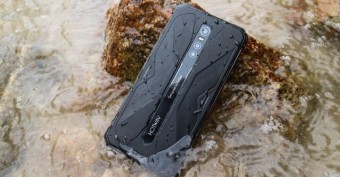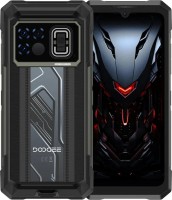Навіщо смартфонам стільки камер
Ми незалежно перевіряємо товари та технології, які рекомендуємо.

У фотоапаратах для зйомки різних планів застосовуються змінні об'єктиви або оптика зі змінною фокусною відстанню. Але смартфон — це досить компактна річ. Зум-об'єктиви суттєво збільшували б розміри фотомодуля, тому у переважній більшості смартфонів використовується оптика з фіксованим значенням фокусної відстані. Багатокамерні конструкції вирішують основну проблему — вони забезпечують гнучкість зйомки різнопланових сюжетів, будь то пейзажі, портрети або об'єкти на значній відстані від користувача. Крім того, наявність різних сенсорів дозволяє збирати різноманітні допоміжні дані — на їх основі алгоритми штучного інтелекту покращують знімок.
1. Основна (тильна) камера
У смартфонах актуального покоління кількість об'єктивів основної камери зазвичай варіюється від двох до чотирьох. Золота середина — це потрійний фотомодуль, що поєднує в одному флаконі провідний сенсор зображення, ультраширик та телевік. Саме таке нерозлучне тріо часто спостерігається у флагманських камерофонах. У моделях простіше зустрічаються найрізноманітніші конфігурації "багатоликих" камер — їхня якість і призначення різниться залежно від конкретної реалізації.
1.1. Провідний (стандартний) модуль
Найголовніша камера має найкращі характеристики серед усіх фотомодулів. Вона базується на великих датчиках зображення, має високу роздільну здатність (аж до 200 МП, але частіше — в районі 50 МП), оснащується світлосильною оптикою (нерідко менше f/2.0). Провідна камера часто постачається з ширококутним об'єктивом із еквівалентною фокусною відстанню у межах 25 – 35 мм — такі значення оптимально підходять для комфортної зйомки будь-яких повсякденних сюжетів.

Наприклад, у цьому сенсорі на борту моделі Nubia Z70 Ultra передбачена змінна діафрагма оптики.
Саме в провідному сенсорі впроваджуються передові технологічні напрацювання — змінна діафрагма (як у смартфонах Honor Magic 7 Pro або Nubia Z70 Ultra), оптична чи навіть матрична стабілізація зображення, можливість запису відео ультрависокої роздільної здатності (аж до 8K). Решта фотомодулів по суті доповнюють головний датчик своєю присутністю і призначаються для комфортного виконання супутніх задач.
1.2. Ультраширока / надширока камера
Ультраширока камера, як неважко здогадатися з назви, облаштована оптикою з ширшим полем зору, аніж у провідному сенсорі зображення. Збільшені кути огляду доречні для зйомки пейзажів, архітектури, інтер'єрів приміщень, групових знімків. Якщо основна камера смартфона має кути огляду порядку 75 – 80°, то надширик — у районі 120 – 130°. А значить у кадр вміщується значно більше навколишнього простору.

Матриці у ультрашириках менші, ніж у провідному фотомодулі, а світлосила — "темніша". Також варто зауважити, що надширокий сенсор спотворює перспективу — це особливо помітно при зйомці з невеликої відстані. Через це надширик не найкращим чином підходить для портретного жанру фотографії, оскільки будуть порушені пропорції людей у кадрі (камера неприродно розтягує людину). Однак спотворення при зйомці пейзажів, архітектури та панорам чудово доопрацьовуються ШІ-алгоритмами покращення зображень (якщо смартфон обзавівся їхньою підтримкою).
1.3. Телевик
Телевик — це спеціалізований довгофокусний фотомодуль для зйомки віддалених об'єктів. Телевики оснащуються оптикою з вузьким полем зору та еквівалентною фокусною відстанню понад 60 мм (конкретне значення залежить від реалізації). Фактично телеоб'єктив використовується для збільшення зображення без втрати якості. З його допомогою можна знімати полохливу живність, портрети здалеку, елементи архітектури і т.п.
Оптичне збільшення картинки забезпечує виграш у плані деталізації, адже цифрове зумування загрожує погіршенням якості знімків. Але істинне наближення досягається лише на певну фіксовану кратність (2х, 3х, 5х, рідше — до 10х). Це обумовлено неможливістю встановити в тонкий корпус смартфона групу рухомих лінз, за допомогою яких можна було б на льоту змінювати фокусну відстань.
Через особливості оптичної схеми камери-телевики й так займають досить багато місця в корпусі мобільного пристрою. У просунутих камерофонах телевики розміщують перпендикулярно корпусу, а світло на їхню матрицю потрапляє шляхом заломлення променів через спеціальне дзеркало. Такі камери прийнято називати перископами (або перископічними).

При зйомці смартфони можуть використовувати основний сенсор зображення і телевик для захоплення деталей з кількох камер одночасно. Отримана з них інформація може бути використана для інтелектуального покращення фотографії за допомогою алгоритмів ШІ — подібним чином часто реалізовано так зване гібридне зумування. Детальніше про це розповідається у статті "Програмний, оптичний та гібридний зум у камері смартфона. У чому різниця?".
1.4. Макрооб'єктив
Окремий макрооб'єктив — рішення досить спірне. Ні, задумка тут справді хороша — макродатчик дозволяє фокусуватися на маленьких об'єктах з дуже близької відстані, яка обчислюється парою-трійкою сантиметрів. Потенційно це чудово підходить для предметної зйомки. На практиці ж диявол криється в деталях — макрокамери часто оснащуються маленькими матрицями з роздільною здатністю від 2 до 5 МП, які видають посередню якість фотографій.

Макрооб'єктив в основній камері смартфона навряд чи буде використовуватися на регулярній основі, проте для деяких сюжетів він буде дуже доречним. Наприклад, макрокамера дозволить зняти впритул крапельку роси на травинці, різних жучків і букашок.
1.5. Камера-мікроскоп
Модернізована версія макрооб'єктиву з вражаючою кратністю наближення до 30х, а то й до 60х. Камера-мікроскоп слугує для зйомки мікроскопічних об'єктів і текстур, які неможливо розглянути неозброєним поглядом. Практичний сенс від даної камери невеликий, але все-таки вона є едакою родзинкою у багатокамерних конструкціях смартфона.

Недоліки у камери-мікроскопа майже ті самі, що й у звичайних макродатчиках: низька роздільна здатність матриці, відсутність автофокусування, занадто мала глибина різкості. Зате мікроскопічний сенсор часто доповнюється кільцевим спалахом із постійним режимом світіння.
1.6. Камера нічного бачення
Нічна камера дозволяє "бачити" в суцільній темряві. Модулем нічного бачення оснащуються всуціль захищені смартфони, а використовується він для фото- і відеозйомки в умовах часткового або повного відсутності навколишнього освітлення. Для підсвічування сцени задіюються діоди ІЧ-підсвічування, які добивають на відстань 8 – 10 м.

Суперякістю нічні камери не блищать, до того ж розплатою за зйомку на них буде чорно-біле зображення. Сенсори нічного бачення зазвичай доповнюються світлосильною оптикою.
1.7. Тепловізор
Камера-тепловізор — ще одна фіча, яка зустрічається в неубиваних смартфонах з надійним захистом від ударів і падінь, пилу і води. Вона знімає в інфрачервоному спектрі. Тепловізори у смартфонах мають досить вузьку спеціалізацію — таку камеру використовують для виявлення витоків тепла, маршруту прокладки опалювальних труб у підлозі або навіть для пошуку чорно-смугастого кота у темному приміщенні.

Тепловізійний датчик може спиратися на спеціалізоване ПО для інтерпретації результатів і створення теплової карти приміщення. Основною сферою його застосування є ремонтно-будівельні роботи. Але й камера-тепловізор стане в нагоді на полюванні або для військових.
1.8. Чорно-білий (моновихровий) сенсор
На заре становлення багатокамерних конструкцій у смартфонах провідний сенсор зображення нерідко доповнювався чорно-білим датчиком. Зараз він майже повністю випадає, але згадати чорно-білу камеру все ж варто. У звичній кольоровій матриці кожен піксель складається з кількох субпікселів, які відповідають за свою кольорову складову. У монохромному сенсорі такої конструктивної необхідності немає. Як наслідок, чорно-білі матриці містять більші за площею пікселі, що підсилює загальну світлочутливість сенсора.

З практичної точки зору ч/б камера видає менше зашумлену картинку при поганому навколишньому освітленні. Ці дані використовуються в тому числі для основної камери для мінімізації шумів на фотографіях. Також монохромний сенсор дозволяє отримувати більше інформації про сильно освітлені або надто темні ділянки зображення, що необхідно для отримання коректного результату у режимі HDR-зйомки. Насправді значущість чорно-білого датчика суттєво знизилася з розвитком інтелектуальних алгоритмів обробки фотографій за допомогою ШІ — у монохромному модулі просто відпала необхідність.
1.9. Датчик глибини / часопролітний сенсор (ToF-камера)
Допоміжна камера технічно і програмно реалізується по-різному. Зазвичай вона представлена датчиком глибини або часопролітним (ToF) сенсором. За принципом дії такі камери нагадують сонар, де замість звуку використовуються світло. Фотознімки у класичному розумінні на ці камери не робляться, а слугують вони для визначення відстаней до об'єктів.
Дані з датчика глибини збираються для подальшої внутрішньокамерної постобробки фотографії. У першу чергу, інформація буде корисною для відокремлення об'єкта зйомки від фону з малюванням красивого боке (наприклад, в жанрі портретної фотографії). У реалізаціях з окремим датчиком-лідаром допоміжна камера слугуватиме для доповненої реальності (AR) і високоточного 3D-моделювання навколишнього простору. Однак подібні системи зустрічаються вкрай рідко. Устроєні вони таким чином, що спеціальний датчик випромінює світло в інфрачервоному спектрі і потім фіксує швидкість його відображення від об'єкта, на підставі чого малюється 3D-модель.

У переважній більшості допоміжний датчик виконаний не настільки просунутим і лише сприяє основним об'єктивам камери створювати знімки з правильною глибиною різкості.
2. Фронтальна (селфі) камера
Селфі-камери в смартфонах все ще залишаються одиночними. Виняток із правила — рідкісні моделі мобільних пристроїв зі подвійною фронталкою. Одна камера в них ширококутна, друга — надширока (з збільшеним кутом огляду). Для чого це потрібно? Баналізація для групових селфі-кадрів. Іншої смислової навантаження друга фронталка не несе.
У окремих випадках ширококутний об'єктив дооснащується датчиком глибини (або ToF-сенсором), завдяки чому фронталка може робити класні портрети з ефектним розмиванням фону.

У смартфонах від Apple селфі-камера сусідить із спеціалізованим датчиком TrueDepth, який використовує інфрачервоне сканування для роботи системи розблокування по обличчю Face ID. Саме тому "Айфони" раніше мали характерну "«монобровь". У актуальних поколіннях її обіграли більш витончено, але передня камера досі займає доволі багато місця в екранах iPhone.
З цікавих реалізацій селфі-камер варто згадати підекранне (приховане) виконання. Модуль фронталки повністю ховається під пікселями матриці, які згасають при активації селфі-камери. Завдяки цьому об'єктив на передній панелі практично непомітний. Подібна конструкція коштує недешево, а тому зустрічається рідко.
3. Висновок
Скільки б камер не було в смартфоні, пам'ятайте головне — їхня кількість безпосередньо не впливає на якість фотографій. Бюджетний телефон точно не буде знімати на рівні флагмана лише тому, що в обох потрійні камери. Набагато важливіша якість матриці та оптики провідного сенсора, а ще слід розібратися, які камери вам дійсно потрібні.
Статті, огляди, корисні поради
Усі матеріали















































































































